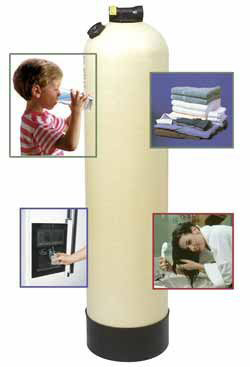
 |
| PH Testing |  |
|
PH is an indicator of the acid or alkaline condition of water. The pH scale ranges from 0-14; 7 indicates the theoretical neutral point. Water with a pH value less than 7 indicates acidity and tends to be corrosive, while water with a value greater than 7 indicates alkalinity and tends to affect the taste of the water. |
||
Water in many mountainous regions, may have very low pH value, low hardness value but high quantity of carbon dioxide. This fact causes corrosion and as a consequence the perforation of pipes. Testing for the pH of your well water is crucial for: |
||
| Evaluating the potential for your household plumbing to be subject to aggressive corrosion. | ||
Evaluating the potential for your drinking water to contain leached metals such as copper, lead, iron, cadmium, and zinc from your well pump and plumbing system. |
||
Determining the effects of proper home treatment on other drinking water contaminants. Depending on the pH level (how acidic or alkaline), pre-treatment may be needed to adjust the pH of your water to a more neutral range. |
||
The pH of drinking water is not a health concern, however, acidic water (low pH) can leach metals from plumbing systems, which can cause health problems. Symptoms of low pH are bluish green stains on fixtures with copper plumbing; reddish stains with galvanized iron plumbing; and water system corrosion problems and plumbing leaks. |
||
If your water is acidic (low pH), you can use a neutralising filter containing calcite or ground limestone (calcium carbonate) or magnesia (magnesium oxide) to raise the pH. Neutralizing filters must be backwashed periodically since they serve as mechanical filters to remove solid particles from the water. They also require periodic replenishment of the neutralizing material. |
||
Copyright - Irish Water Quality Services 2010. All rights reserved. | Ballyverane, Macroom, Co. Cork | info@iwqs.ie | 026 23656 |